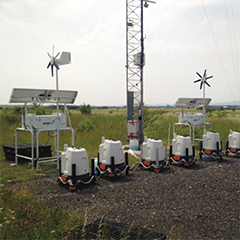2010, ZephIR HQ, Worcestershire, U.K: the ZephIR 300 Lidar, a remote sensing wind measurement tool capable of collecting wind data remotely from its installed location by use of an infra-red laser, was born, following an 18-month product development program that focused on improving the ‘usability’ of remote sensing devices. The resultant product was described as being ‘easy to use, while also rugged to ensure its longevity in the field.’
In this paper we shall evidence that description and it begins with a number: #307. Mention that number to the team at ZX Lidars (ZephIR Lidar rebranded to ZX Lidars in 2018) and it will be met with a smile. And that’s because #307 has touched so many of the team and its use within the industry is the epitome of what a remote sensor should be, and do.
The first of its kind
As ‘300‘ was released to the market, it marked a step change in wind Lidar, of single ‘pod’ construction it was capable of operating from -40°C through to +50°C. It was small in size, low power, and fully CE compliant including approved ‘true’ Class 1 eye-safe laser classification. The system was provided with an 18-month service and warranty period as standard, today it’s up to 5 years and that meant its calibration was valid for this period also. Performance was traced back to the IEC-compliant UK Remote Sensing Test Site, itself certified by Garrad Hassan, now DNV GL.
Finally, a remote sensor that could be used everywhere.






























